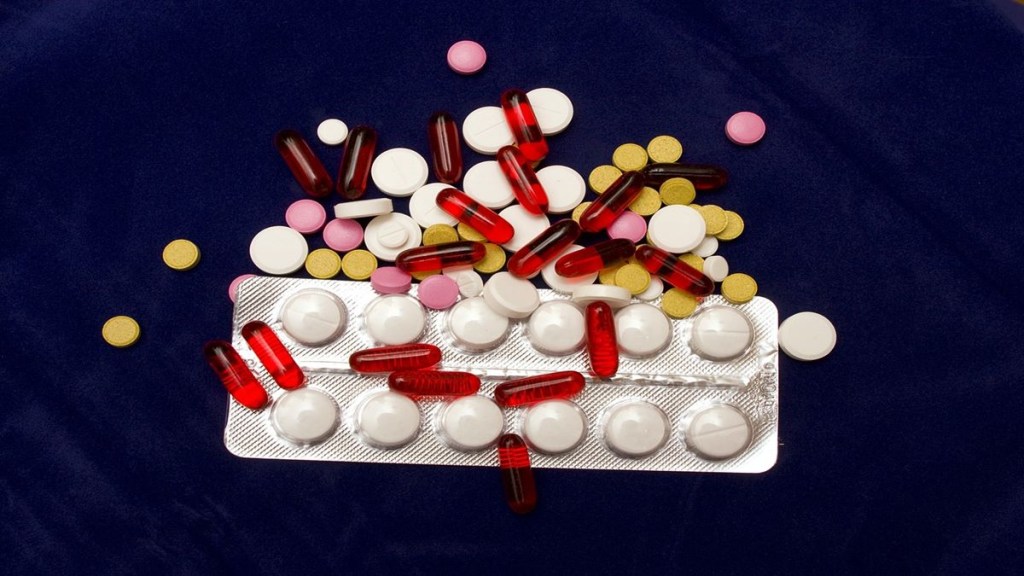India has the highest burden of bacterial infection. Consequently, antimicrobial resistance is a major public health challenge in India as the burden of infectious diseases is high and consumption of antibiotics is massive and un-regulated.
The World Health Organization (WHO) maintains that AMR, also known as drug resistance, occurs when microorganisms such as bacteria, viruses, fungi and parasites change in ways that render the medications used to cure the infections they cause ineffective.
According to WHO, when the microorganisms become resistant to most antimicrobials they are often referred to as “superbugs”.
It is estimated that bacterial AMR was directly responsible for 1.27 million global deaths in 2019 and contributed to 4.95 million deaths, as per WHO data.
What should we worry about AMR?
AMR affects countries in all regions and at all income levels. According to WHO, AMR puts many of the gains of modern medicine at risk.
The emergence and spread of drug-resistant pathogens threaten the ability to treat common infections and to perform life-saving procedures including cancer chemotherapy and caesarean section, hip replacements, organ transplantation, and other surgeries, the global health agency warns.
In addition to death and disability, AMR has significant economic costs. The World Bank estimates that AMR could result in US$ 1 trillion in additional healthcare costs by 2050, and US$ 1 trillion to US$ 3.4 trillion in gross domestic product (GDP) losses per year by 2030.
The 2022 Global Antimicrobial Resistance and Use Surveillance System (GLASS) report highlights alarming resistance rates among prevalent bacterial pathogens.
“Median reported rates in 76 countries of 42% for third-generation cephalosporin-resistant E. coli and 35% for methicillin-resistant Staphylococcus aureus are a major concern. For urinary tract infections caused by E. coli, 1 in 5 cases exhibited reduced susceptibility to standard antibiotics like ampicillin, co-trimoxazole, and fluoroquinolones in 2020,” the WHO stated.
Moreover, Klebsiella pneumoniae, a common intestinal bacterium, also showed elevated resistance levels against critical antibiotics.
The UN Health Body also warns that increased levels of resistance potentially lead to a rise in the usage of last-resort drugs like carbapenems, for which resistance is being reported from multiple parts of the world including India.
Projections by the Organization for Economic Cooperation and Development (OECD) indicate an anticipated twofold surge in resistance to last-resort antibiotics by 2035, compared to 2005 levels.
What is the status in India?
AMR poses major public health threat to India as it leads the world in human antibiotic use which is a prime driver of antimicrobial resistance. According to The Lancet Microbe journal, widespread resistance increases the use of broad-spectrum empiric antibiotic therapy, narrowing treatment options and worsening patient outcomes.
“Over-the-counter use of antibiotics, lack of awareness, inadequate use of diagnostics, overcrowding, cross-infections, financial compensation of doctors by pharmaceuticals, and poor health infrastructure also amplify India’s antimicrobial resistance problem,” the study revealed.
A 2022 study by Indian Council of Medical Research (ICMR) revealed that a majority of patients in India may no longer benefit from carbapenem as they have developed resistance to it. It is a powerful antibiotic administered mainly in ICU settings to treat pneumonia and septicemia.
“Addressing India’s AMR crisis necessitates a comprehensive strategy, aligned with WHO, ICMR, and FDA guidelines. Key factors include addressing socio-economic and cultural influences, enhancing policy enforcement, raising public awareness, and strengthening research and surveillance. Critical drivers of AMR in India are over-prescription, self-medication, and regulatory gaps,” Dr Deepak Sehgal, Professor at School of Natural Sciences, Department of Life Sciences, Shiv Nadar University, Delhi-NCR told Financial Express.com.
According to Dr. Sehgal, the WHO underscores the environmental proliferation of resistant genes like NDM-1. ICMR data reveals escalating drug-resistant infections, highlighting the dire situation of diseases like TB.
In 2018, about 500,000 cases were identified as rifampicin-resistant, most exhibiting multi-drug resistance, emphasizing the urgency of effective countermeasures. This leads to prolonged hospitalisation incurring large sum of money, he explained.
How does AMR occurs?
Resistant infections occur when microorganisms mutate or acquire foreign DNA, making them resistant to drugs, complicating treatment, Dr. Sehgal explained.
“In 66.3 percent of clinical samples, resistant strains like Klebsiella pneumoniae, Escherichia coli, and Staphylococcus hominis were found. The six commonly used antibiotics—levofloxacin, ceftazidime, ciprofloxacin, cefotaxime, ceftriaxone, and erythromycin—showed over 50% resistance rates,” he told Financial Express.com.
The WHO reports roughly 500,000 new global cases of rifampicin-resistant TB in 2018, with most being multi-drug resistant. “Artemisinin resistance hampers malaria treatment, while Candida auris has grown resistant to multiple antifungals. HIV drug resistance results from viral mutations reducing effectiveness of antiretroviral drugs,” he added.
How is the pharmaceutical sector preparing for the emerging threat of antimicrobial resistance?
The pharmaceutical sector’s approach to combating antimicrobial resistance (AMR) aligns with the guidelines of global and national health authorities like WHO, ICMR, and FDA, while also incorporating innovative strategies, Dr. Sehgal claimed.
“The AMR Industry Alliance brings together biotech, diagnostics, generics, and research-based pharmaceutical companies, to drive and measure industry progress to curb antimicrobial resistance. The Davos Declaration signed by more than 100 companies and trade associations in January 2016, called for collective action to create a sustainable and predictable market for alternate antibiotics against AMR microbes,” he said.
In line with WHO’s global action plans, the pharmaceutical sector is focusing on developing new antibiotics, enhancing surveillance, and promoting stewardship and awareness campaigns.
“This multifaceted approach, combining innovative treatment strategies, regulatory frameworks, global surveillance, and public awareness, reflects the sector’s commitment to a coordinated and effective response to the AMR crisis,” he pointed out.
How India can tackle AMR and its impact?
In August this year, the Global Antibiotic Research and Development Partnership (GARDP) announced that it has launched an observational study in India to highlight the status of the management of antibiotic-resistant infections in hospitals.
It is a Swiss not-for-profit organization developing new treatments for drug-resistant infections that pose the greatest threat to health. The study is being conducted in collaboration with the Indian Council of Medical Research (ICMR).
Dr. Sehgal maintained that India is at a pivotal point in its fight against antimicrobial drug resistance (AMR), facing high resistance rates, socio-economic challenges, and the spread of genes like NDM-1.
Different approaches are required and the gaps have been listed:
- Policy and Regulation: India’s national policies reflect WHO guidelines, yet enforcing these, especially in rural areas, is challenging.
- Education and Awareness: Essential targeted programs are needed for areas prone to self-medication, aligning with WHO’s guidelines.
- Hospital Infection Control: WHO-recommended practices are being adopted in Indian hospitals, but widespread application remains a challenge.
- Surveillance and Research: Comprehensive surveillance is vital for policy, as supported by WHO and ICMR.
- Antibiotic Stewardship: Endorsed by the FDA and WHO, stewardship programs need wider implementation and government backing in India.








